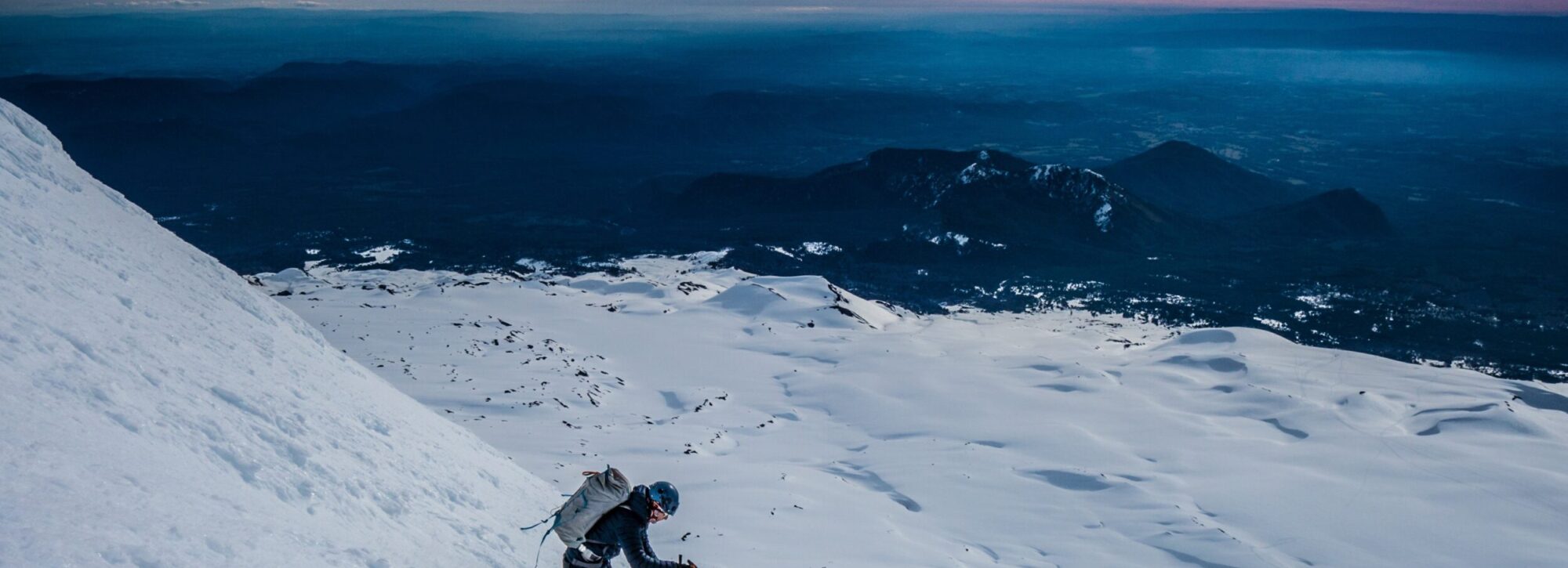Skiing the Chilean Volcanoes
In the American west in the states of California, Oregon, and Washington you’ll find temperate rainforest, giant redwood trees, and towering glaciated volcanoes that offer the country’s best spring skiing. Six thousand miles to the south exists a bizarro-Cascadia with its own rainforest, giant trees, and towering volcanoes of snow. The Chilean regiones of Biobio, Araucania, and Los Lagos are home to plants and animals found nowhere else in the world, deep mountain snow, and arguably the world’s best skiing from September to November.
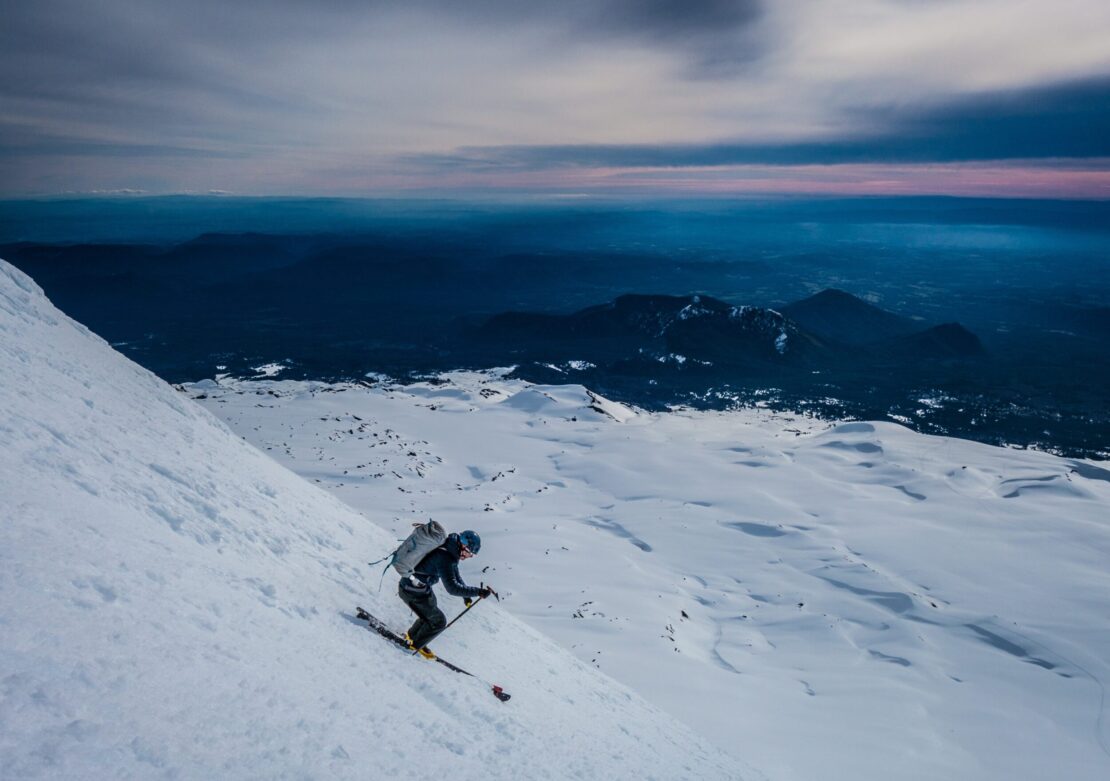
In the early 2010s I sold some climbing gear to an eccentric dirtbag climber on the internet. We met in an REI parking lot and, against my will, he told me all about skiing in Chile in the springtime. He said he spent every Austral Spring there, skiing wide open slopes from the summits of volcanoes every day while the rest of North America scratched their way down the icy “white strip of death” at Arapahoe Basin. “Come down with me this year,” he demanded. So I did, and so began my annual pilgrimage to this special part of the world.
VALDIVIA
Unique in the world is the northern patagonian temperate rainforest called the “Valdivian Rainforest”. The Alerce Andino, one of the world’s tallest trees, grows higher than 200ft. The araucaria “monkey puzzle” trees have been around since the dinosaurs and look like something out of a Dr Seuss book. The world’s smallest opossum (el monito del monte) and the world’s smallest deer (el pudu) scurry through the impossibly thick undergrowth. One hundred inches of rain fall every year, raining and snowing every day of the winter. Above it all rise dozens of great, glacier capped volcanoes that fertilize the rainforest with eruptions of ash.
The monkey puzzle trees are Valdivia’s bizarro pine tree, and skiing through the araucaria is like a weird dream. The trees’ leaves are sharp cactus-like triangles, the branches reach and wiggle like tentacles, and the bark looks like the tree was assembled one piece at a time.
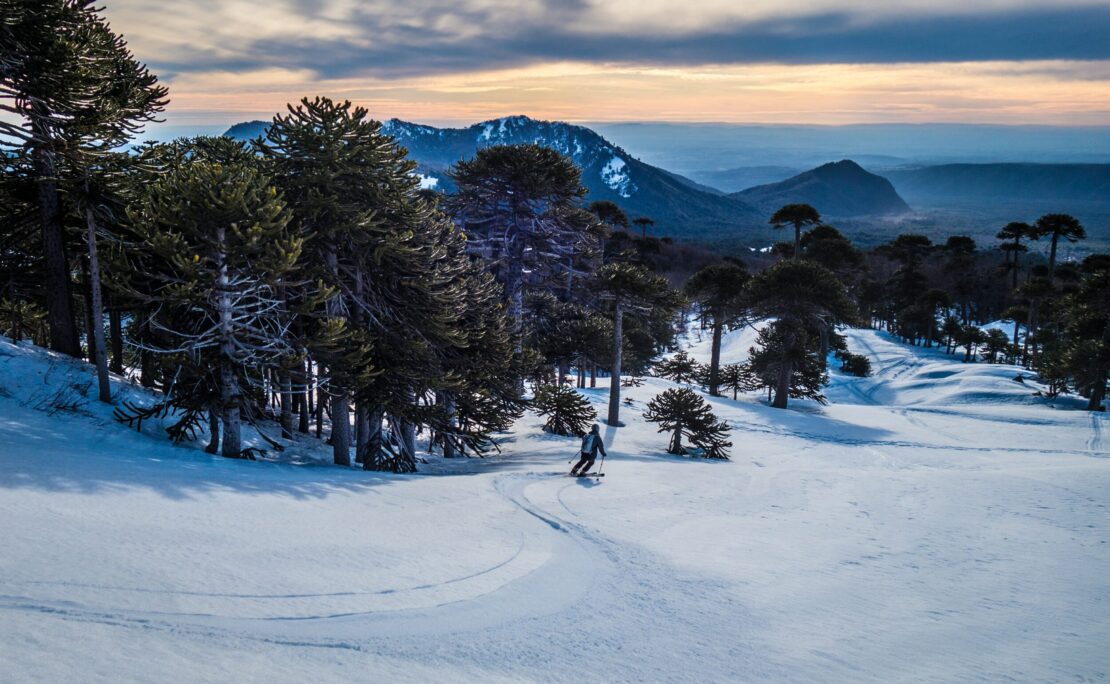
My friend forced us to detour several hours away one day. “You gotta see this. It’s worth it,” he said, and we drove up and up a road made of volcanic ash into the thick jungle to a canyon filled with icy waterfalls and every inch covered in ferns. A red walkway had been built above a thermal river that fed dozens of hot spring pools. The Termas Geometricas is one of several incredible hot springs in the area, I later learned it’s one of the “natural hot spring wonders of the world!”
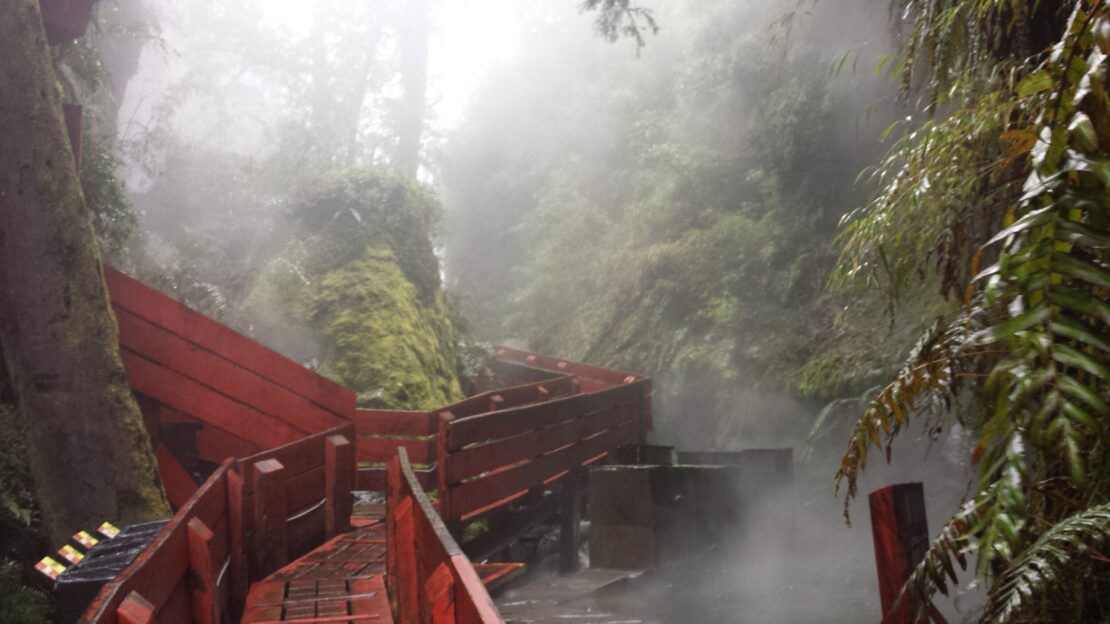
FIRE AND ICE
Poking out of the rainforest, though, are giant snow covered mountains. The volcanoes in this region are still active. Volcan Calbuco threatened to destroy the city of Puerto Varas when it erupted in 2015. It’s common to see a lava lake in the summit of Volcan Villarica (if it’s not pumping out noxious fumes that block entry to the summit). Volcan Llaima smells like rotten eggs and warm, dry rocks at its summit offer shelter for cold climbers after a long 6,000 ft ascent.
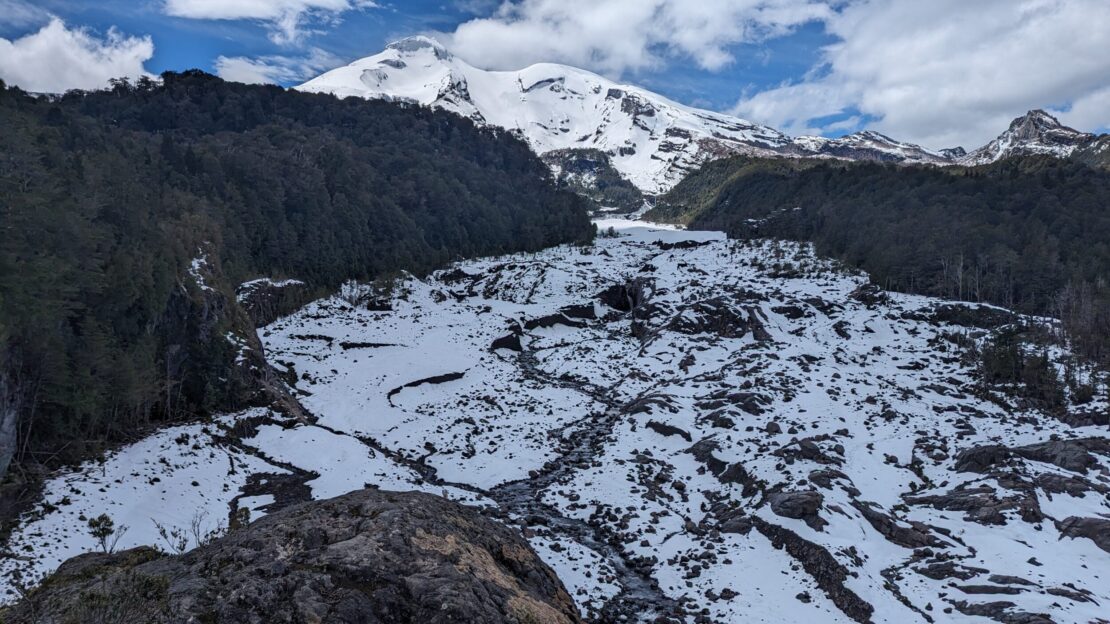
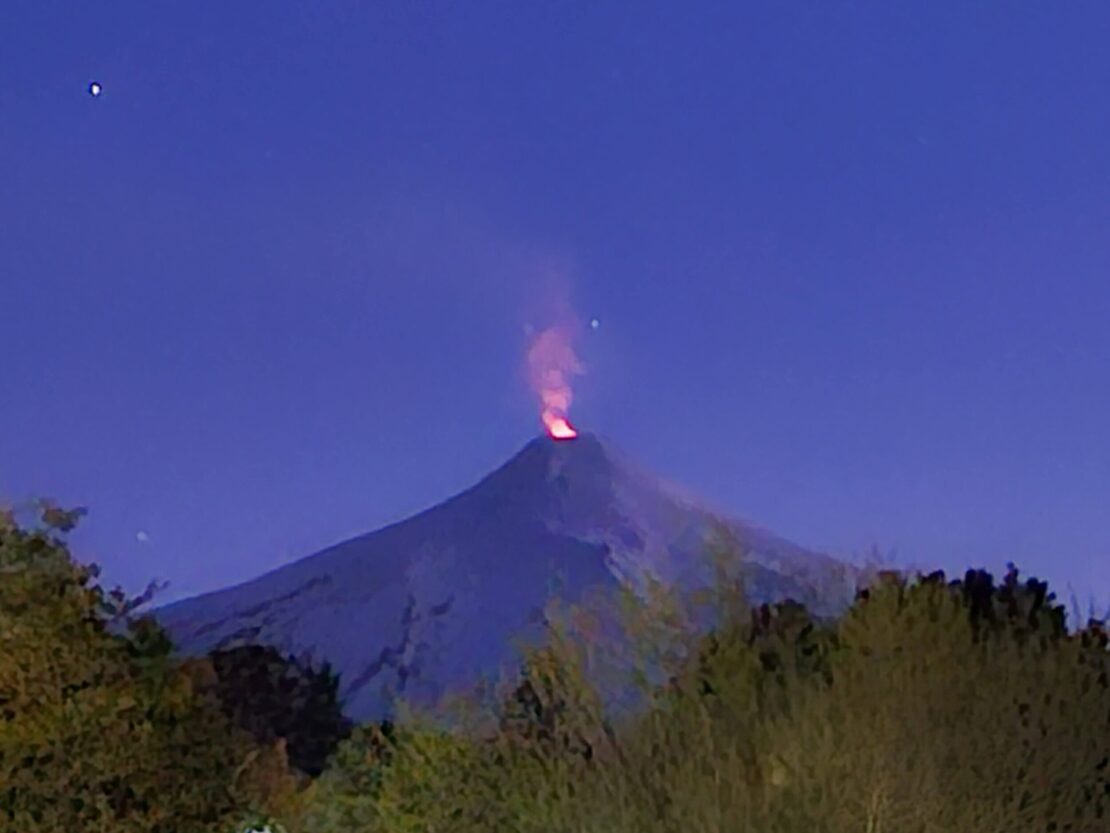
Winter hammers the Chilean volcanoes with near endless storms, but by late September the weather relaxes and corn snow is on the menu. Although most of a 5,000-9,000 ft ski descent of these mountains may be corn, the most common condition up high is “rime ice”. Rime is vapor that has frozen solid to a surface, like on a humid day when poles and lift towers have ice stuck to one side of them along their length. It sounds terrible, but provides a surprising amount of grip for a ski and over the years I’ve developed quite a taste for skiing the escarcha.
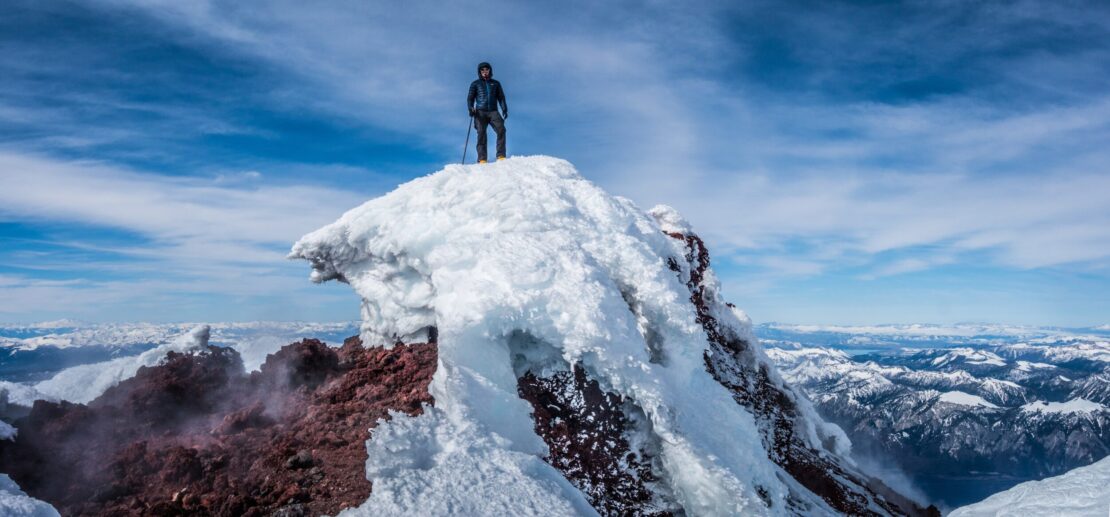
REAL PATAGONIA
As you drive further south towards the start of the Carretera Austral and the entrance into what my friend calls “real Patagonia”, the weather gets wetter, the forest gets thicker, and the snow gets deeper. A clear and warm day can turn into 80 mph winds and total lack of visibility – but only at the top of the mountain. These volcanoes rise so drastically upward, with no other mountains around coming even close, they pierce the jet stream and generate a “lenticular cap,” a cloud that caps the mountain like a giant, upside-down bowl of moisture. Inside the lenticular cloud skiers are battered by fierce winds, covered in rime ice, and totally unable to see. The minute you ski below the rim, though, it’s back to sunny corn skiing.
South of the largest city in Patagonia, Puerto Montt, access becomes very challenging. After 12 hours of jungle bushwacking and not even getting close, we turned around on Volcan Yates. Famously in the film “180 Degrees South” climbers fought for days to reach the slopes of Volcan Corcovado (and even then they couldn’t reach the summit).
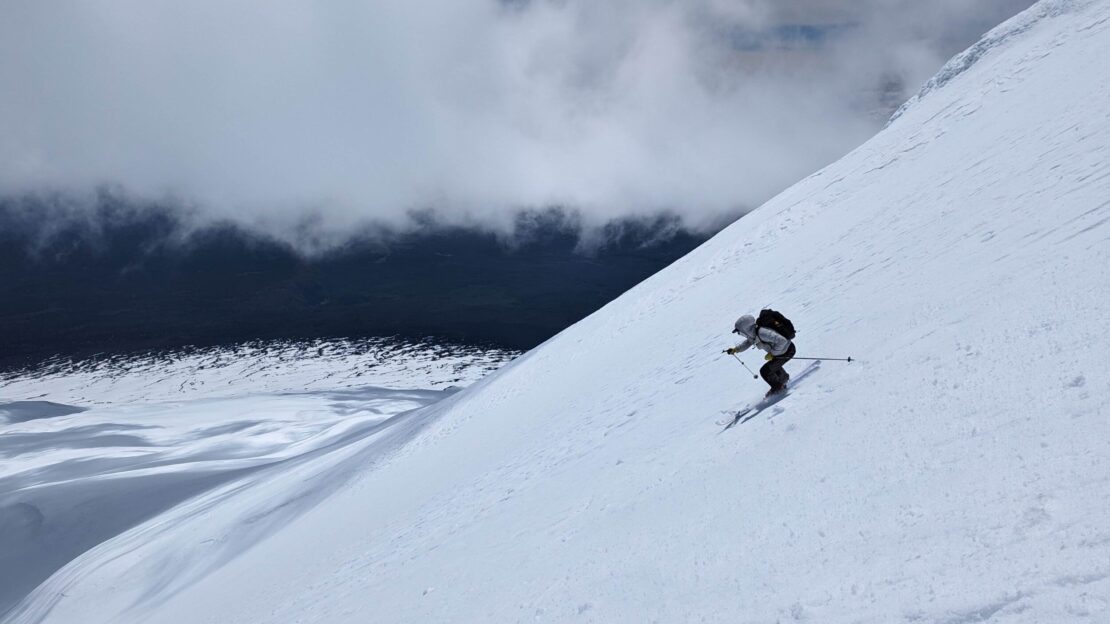
BIG SKIING
In college my friends and I road tripped to Cascadia to ski Mount Shasta and Mount Adams. As Colorado boys we had never seen mountains that big before. Piercing the sky, covered in 30 feet of snow, and ten thousand feet above the surrounding valleys, we could hardly believe what we were seeing. The Chilean volcanoes brought me back to those days, with Volcan Osorno, Llaima, and others offering 7,000ft or more of skiing in one go. On the border peak Volcan Lanin I was told the Argentine guides didn’t like people accessing “their” mountain from the Chilean side, but they couldn’t stop us enjoying our monstrous 9,000 ft corn snow descent into a completely different country.
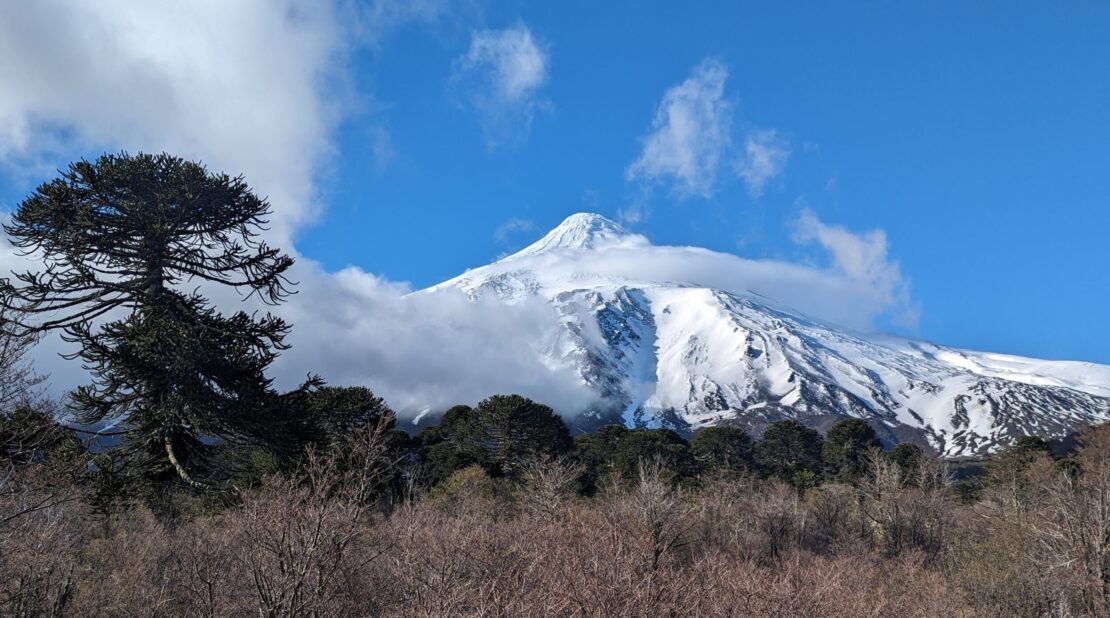
SEPTEMBER SNOW
Before I started my annual migration to Chile I spent most of September chronically checking the weather to see if 2 inches of snow had fallen on any of the fourteeners. I even had a several year streak of skiing old snowfields in the darkest corners of Colorado every month of the summer, and I dreaded September when I’d hike all day to make five or six turns on rock hard “snow”. No need in Patagonia, as September marks the first days of sun in months and great white peaks emerge above a green valley, in their prime for spring ski conditions through Thanksgiving. Just a few inches of snow even turns the volcanoes into a powder day.
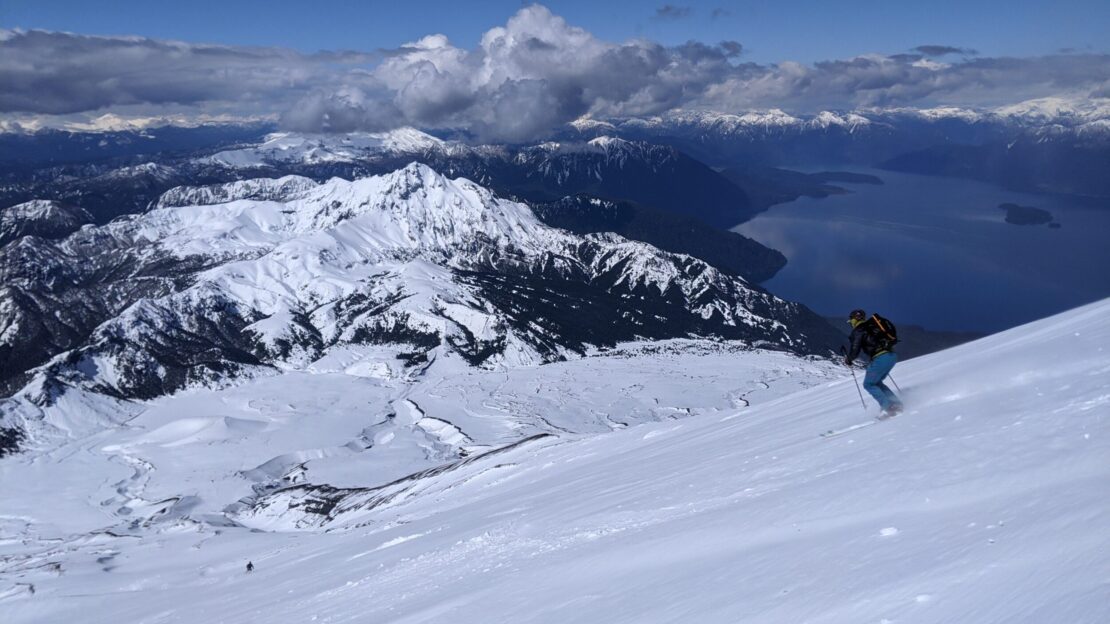
For those with good mapping skills, an understanding of the intricacies of skiing volcanoes, and decent Spanish (and serviceable ability to drive a stick shift), the Chilean volcanoes are waiting. It’s Washington if Seattle had never become a city. The Andes are one of the world’s great ranges and not to be missed.
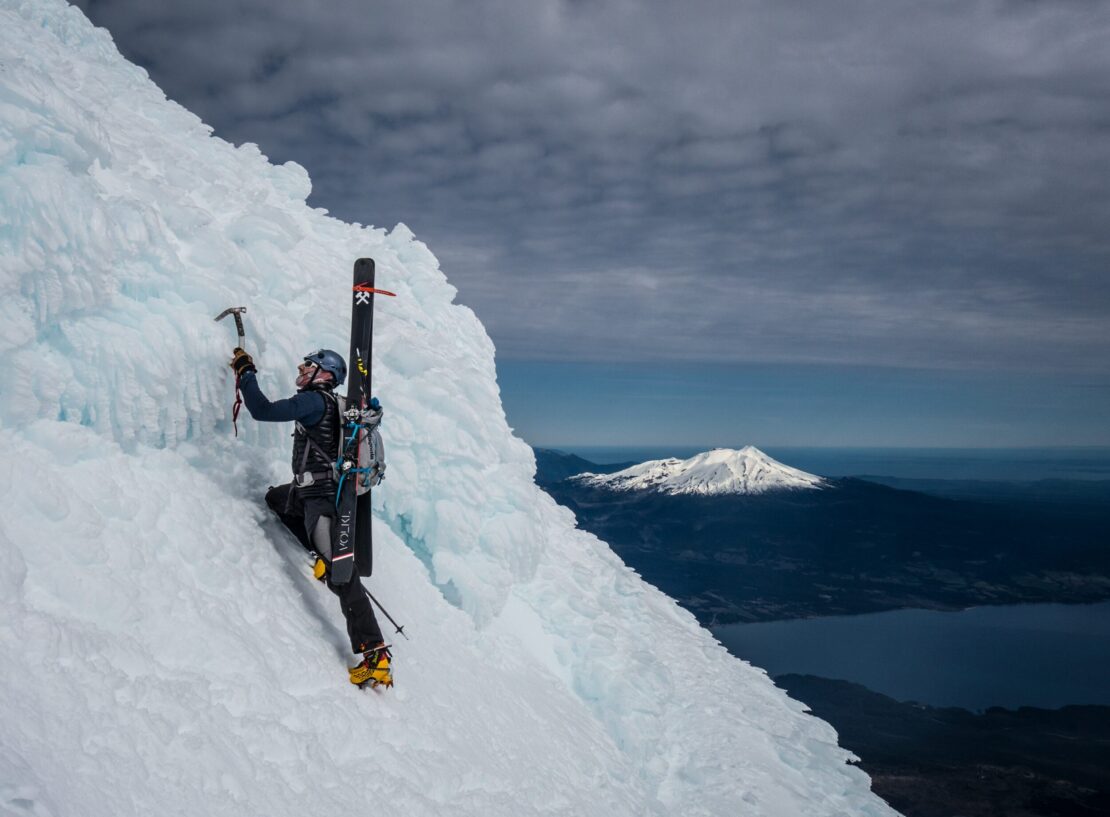
Give us a call or shoot us an email to learn more about this unique, once in a lifetime ski trip!
By Jordan Diefenderfer – [email protected]
